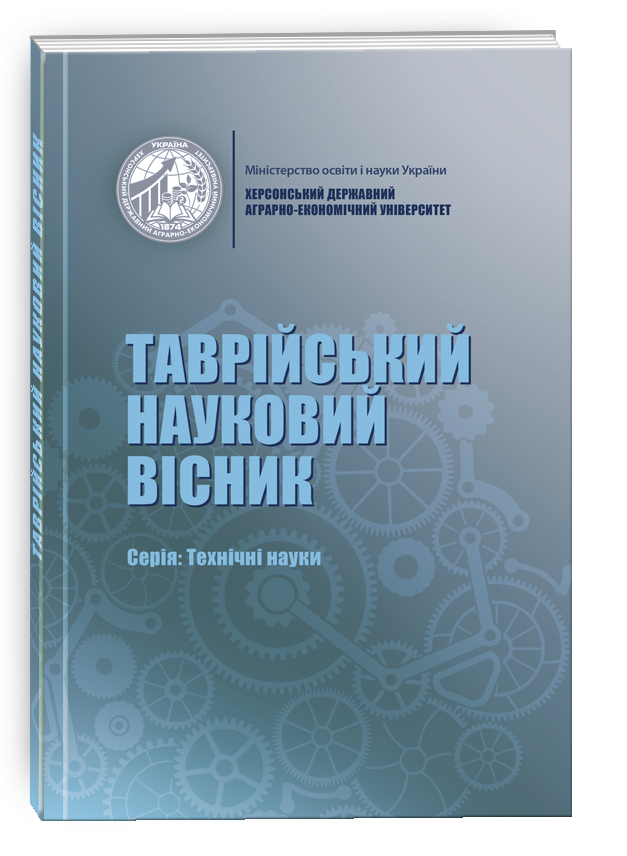COMPLEX METHOD OF STABILIZING THE EFFICIENCY OF SOLAR CELLS BASED ON POLYCRYSTALLINE AND MONOCRYSTALLINE SILICON
DOI:
https://doi.org/10.32851/tnv-tech.2023.1.1Keywords:
solar cell, photoelectric conversion, polycrystalline silicon, photoluminescent coating, microrelief structures, service lifetime.Abstract
The analysis of the key factors limiting the solar cell efficiency was carried out and the problem of the discrepancy between the absorption spectra of photoelectric converters and the spectrum of solar radiation was pointed out. The methods of expanding the absorption spectrum of the photoelectric converter by applying a layer of luminophor with a fixed Stokes shift to the surface of the solar cell have been generalized, which makes it possible to compensate for the discrepancy in the corresponding spectra. The method of increasing the efficiency of a solar cell by applying a photoluminescent coating was summarized and the shortcomings of the approach were shown. The work specifies the requirements for the luminophor, which include a high photoluminescence quantum yield, an absorption spectrum that lies in the short-wavelength part of the visible range and the near-ultraviolet range, as well as photoluminescence spectrum that lies in the long-wavelength part of the visible range and the near-infrared range. The importance of the stability of the optical characteristics of the dye and the high level of adhesion to the surface of the substrate based on polycrystalline and monocrystalline silicon is also indicated. It is noticed that the spatial amorphousness inherent in the photoluminescent response leads to significant losses in the converted part of solar radiation. In order to solve the problem of spatial amorphousness of the photoluminescent response, it is proposed to form solar cells with surface microrelief, which allows to partially compensate the corresponding losses, as well as to stabilize the efficiency of the solar cell when the position of the sun changes during the day. A methodology for calculating the efficiency of the photoelectric converter was developed according to the geometric dimensions of the structural elements of the surface microrelief and the optical parameters of the photoluminescent coating layer. It is noted that by changing the arguments of the multidimensional objective functions, the problem of optimizing the parameters of the modified solar cell can be reduced to the problem of finding a global maxima or one of the local maxima.
References
Mukhopadhyay S. Solar energy and gasification of MSW: two promising green energy options. Green Energy Systems. 2023. P. 93–125. URL: https://doi.org/10.1016/ b978-0-323-95108-1.00003-3 (date of access: 28.02.2023).
Urbina A. The Energy Balance of Solar Electricity. Green Energy and Technology. Cham, 2022. P. 157–177. URL: https://doi.org/10.1007/978-3-030-91771-5_6 (date of access: 28.02.2023).
Renewable Energy for a Green Future: Electricity Produced from Efficient Luminescent Solar Concentrators / A. V. Rodrigues et al. Solar Energy Advances. 2022. P. 100013. URL: https://doi.org/10.1016/j.seja.2022.100013 (date of access: 28.02.2023).
Abbassi A. Advanced Materials for Solar Cell Applications: Case of Simple and Composite Oxides. Advanced Technologies for Solar Photovoltaics Energy Systems. Cham, 2021. P. 1–13. URL: https://doi.org/10.1007/978-3-030-64565-6_1 (date of access: 28.02.2023).
Kryuchyn A. A., Beliak I. V. Development of nanostructured luminophor coating for broadening of solar cell absorption spectrum. SPIE Solar Energy + Technology, San Diego, California, United States / ed. by O. V. Sulima, G. Conibeer. 2014. URL: https://doi.org/10.1117/12.2060832 (date of access: 28.02.2023).
Sugianto S. Comparative Analysis of Solar Cell Efficiency between Monocrystalline and Polycrystalline. INTEK: Jurnal Penelitian. 2020. Vol. 7, no. 2. P. 92. URL: https://doi.org/10.31963/intek.v7i2.2625 (date of access: 28.02.2023).
Monocrystalline Silicon Solar Cell Simulation With Reduced Absorber Thickness and Efficiency Exceeding 25% / D. Sherman et al. 2021 IEEE 48th Photovoltaic Specialists Conference (PVSC), Fort Lauderdale, FL, USA, 20–25 June 2021. 2021. URL: https://doi.org/10.1109/pvsc43889.2021.9518818 (date of access: 28.02.2023).
Verma M., Prasad Mishra G. TOPcon route with quantum wells in GaInP/Si dual junction cell for efficiency enhancement. Solar Energy. 2023. Vol. 250. P. 409–417. URL: https://doi.org/10.1016/j.solener.2022.12.053 (date of access: 28.02.2023).
Lu S. Room-temperature wafer bonded GaInP/GaAs/InGaAsP/InGaAs four-junction solar cell grown by all-solid state molecular beam epitaxy. Optical Nanostructures and Advanced Materials for Photovoltaics, Suzhou. Washington, D.C., 2015. URL: https://doi.org/10.1364/pv.2015.ptu3b.2 (date of access: 01.03.2023).
Kim H. J., Kim Y. W. High efficiency GaInP/GaAs double junction Solar cell on Si substrate assisted by the electron beam treatment. 2017 IEEE 44th Photovoltaic Specialists Conference (PVSC), Washington, DC, 25–30 June 2017. 2017. URL: https://doi.org/10.1109/pvsc.2017.8366606 (date of access: 01.03.2023).
Indoor/outdoor light-harvesting by coupling low-cost organic solar cell with a luminescent solar concentrator / F. Mateen et al. Solar Energy. 2020. Vol. 207. P. 379– 387. URL: https://doi.org/10.1016/j.solener.2020.06.104 (date of access: 01.03.2023).
Silicon solar cell efficiency improvement employing photoluminescent properties of chlorophyll-A / R. Lopez-Delgado et al. Microelectronic Engineering. 2019. Vol. 216. P. 111047. URL: https://doi.org/10.1016/j.mee.2019.111047 (date of access: 01.03.2023).
Broadband photoluminescent quantum yield optimisation of Er3+-doped β-NaYF4 for upconversion in silicon solar cells / S. K. W. MacDougall та ін. Solar Energy Materials and Solar Cells. 2014. Т. 128. С. 18–26. URL: https://doi.org/10.1016/j. solmat.2014.05.004 (дата звернення: 01.03.2023).
Multi-Photon Microscopy and Optical Recording / V. V. Petrov et al. PH "Akademperiodyka", 2016. URL: https://doi.org/10.15407/akademperiodyka.311.156 (date of access: 01.03.2023).
Beliak Ie.V., Kryuchyn A.A., Manko D.Yu. Optimization of photoelectric converters. 10th Juilee International Conference «Nanotechnologies and Nanomaterials» (NANO-2022), 25–27 of August 2022. 2022. Lviv, House of Scientists.
Beliak Ie.V., Kryuchyn A.A., Manko D.Yu. Methodology for photomatrix’s photosensitivity and color rendering indexes increasing by applying a luminescent coating. The 8th International Conference on Control and Optimization with Industrial Applications COIA-2022, 24–26 August 2022. 2022. Baku, Azerbaijan.
Anikin P.S. & Beliak, Ie.V. Development of multispectral recording media for multilayer photoluminescent information recording. Electronics and Information Technologies. 2019. (12), p. 3–13.







